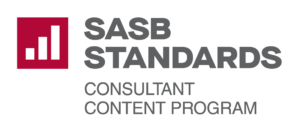Thanks to a combination of investor demands, shifting consumer values, tightening regulations, and growing leadership commitment, sustainability is not just a feel-good anymore, it’s a must-do.
So what if your company is still treating it like an optional upgrade? Let’s explore how to hardwire sustainability into your core operating system.
In this blog, we take cues from Noel Kinder, former chief sustainability officer at Nike and current advisory board member at Greenplaces.
From aspiration to implementation
This is a pivotal moment for corporate sustainability. “We’re at an inflection point,” Kinder says, where we’re moving from “an intention to do the right thing to very much a need to… show your homework, if you will, to be rigorous in how things are reported, to be realistic in the aspirations and the goals that you put out into the world.” Good intentions aside, sustainability is about concrete actions and measurable results.
As a business leader, how do you get started?
- Trade vague ideas for specific, measurable targets
- Default to transparency about your processes and progress
- Ensure that your leadership team is fully on board
A meeting of the minds
Understanding and aligning with what your peers are trying to achieve can create momentum. “When you’re really trying to drive change,” Kinder explains, you’re looking for those sweet spots where “the strategy that you’re trying to drive as an individual leader, intersects with what somebody else is trying to do.”
- Build relationships with peers who can help you set common goals and leverage areas where sustainability efforts align with theirs
- Highlight efficiency gains from sustainable practices
“That flywheel starts to turn and people see the value in sustainability being as much about business, resilience, and efficiency as anything else,” Kinder notes.
When the going gets tough, the tough get sustainable
Driving sustainability initiatives comes with challenges. It isn’t always smooth sailing. “There are going to be decisions in the sustainability space that, maybe cost a little more, or require a little bit of innovation or require you to tell a little bit different brand story,” Kinder cautions. Change takes time and effort.
Be ready to:
- Justify initial costs against long-term benefits
- Drive innovation in products and processes
- Exercise patience and robust influencing skills
Where the rubber meets the road
Kinder’s experience has taught him the importance of strategic alignment. A deep understanding of the impacts of various business functions is crucial. “When I first started the role of CSO at Nike, I reported to the COO,” he shares. And that was really intentional, because operations, particularly for a product company, represents the biggest carbon footprint.” Kinder adds, “What I have found is that the more you understand the upstream and downstream impacts of the functions you’re trying to work with, the more you’re able to drive change.”
Key strategies include:
- Gaining a comprehensive view of how different departments affect sustainability
- Collaborating closely with reporting and legal teams
- Partnering with operations to leverage maximum impact
Setting your north star
A unified vision for sustainability is paramount, Kinder emphasizes. “You have to know what you want to stand for. And that may be aspirational. ‘We wanna lead our industry, we wanna be Number 1, we wanna have science-based targets,’ whatever it might be.” He adds, “You have to have alignment across the company as to what everybody’s signing up for. Because the reporting expectations are so much higher now than they ever have been before.” He also notes, “At the end of the day, sustainability is an enterprise-wide thing and so you need the enterprise to engage in that performance management aspect.”
- Align the entire company behind sustainability goals
- Foster widespread participation
- Integrate goals into existing performance metrics
As instinctual as breathing
The ultimate aim is to make sustainability an integral part of your business. “Once you’re in the fabric of the business, it’s just normal,” Kinder says. That means there’s no need to recreate the wheel. “Piggyback on what you already have,” he advises. “Don’t create something new. Nobody wants another meeting or committee.”
- Incorporate sustainability into existing processes
- Make sustainability a standard part of decision-making
- Normalize sustainability discussions in day-to-day operations
By following these actionable steps, you’re not just meeting regulatory demands—you’re driving efficiency, resilience, and long-term success. It’s time to create a powerful engine for positive change for both your company and the planet.
Ready to boost your sustainability game? Partner with Greenplaces to streamline your sustainability efforts. Our platform empowers businesses to measure, manage, and communicate their environmental impact. Request a demo today.










